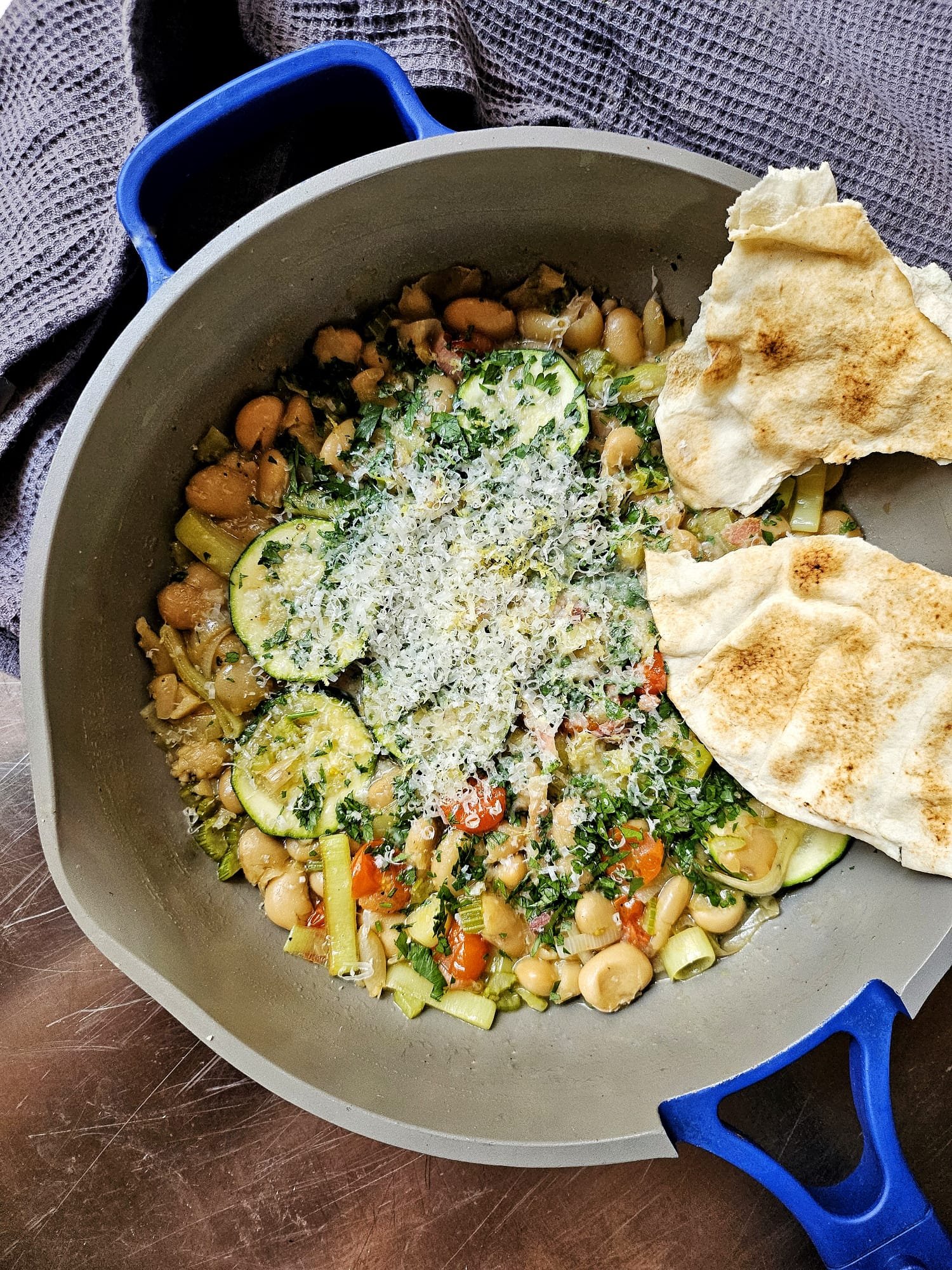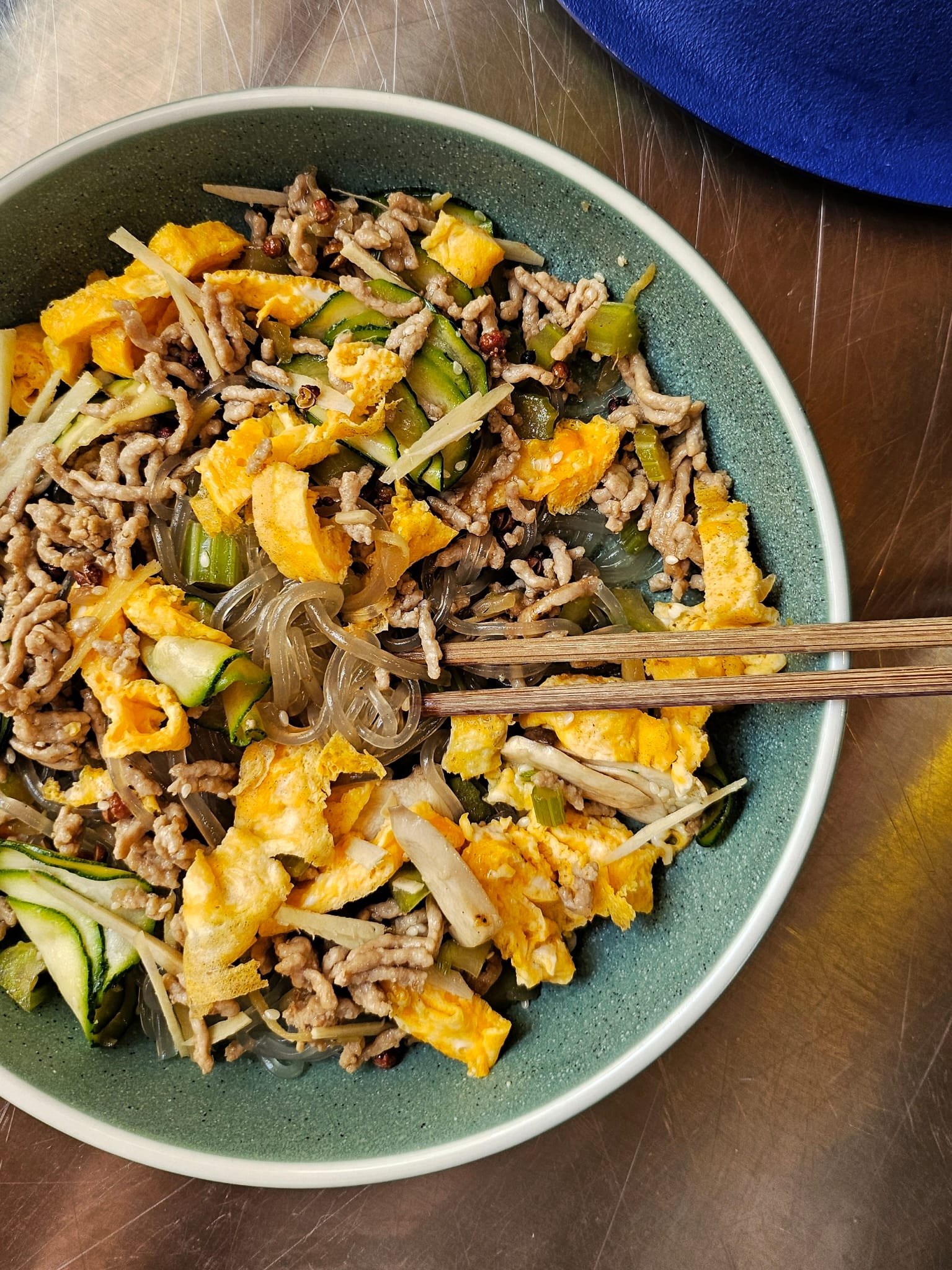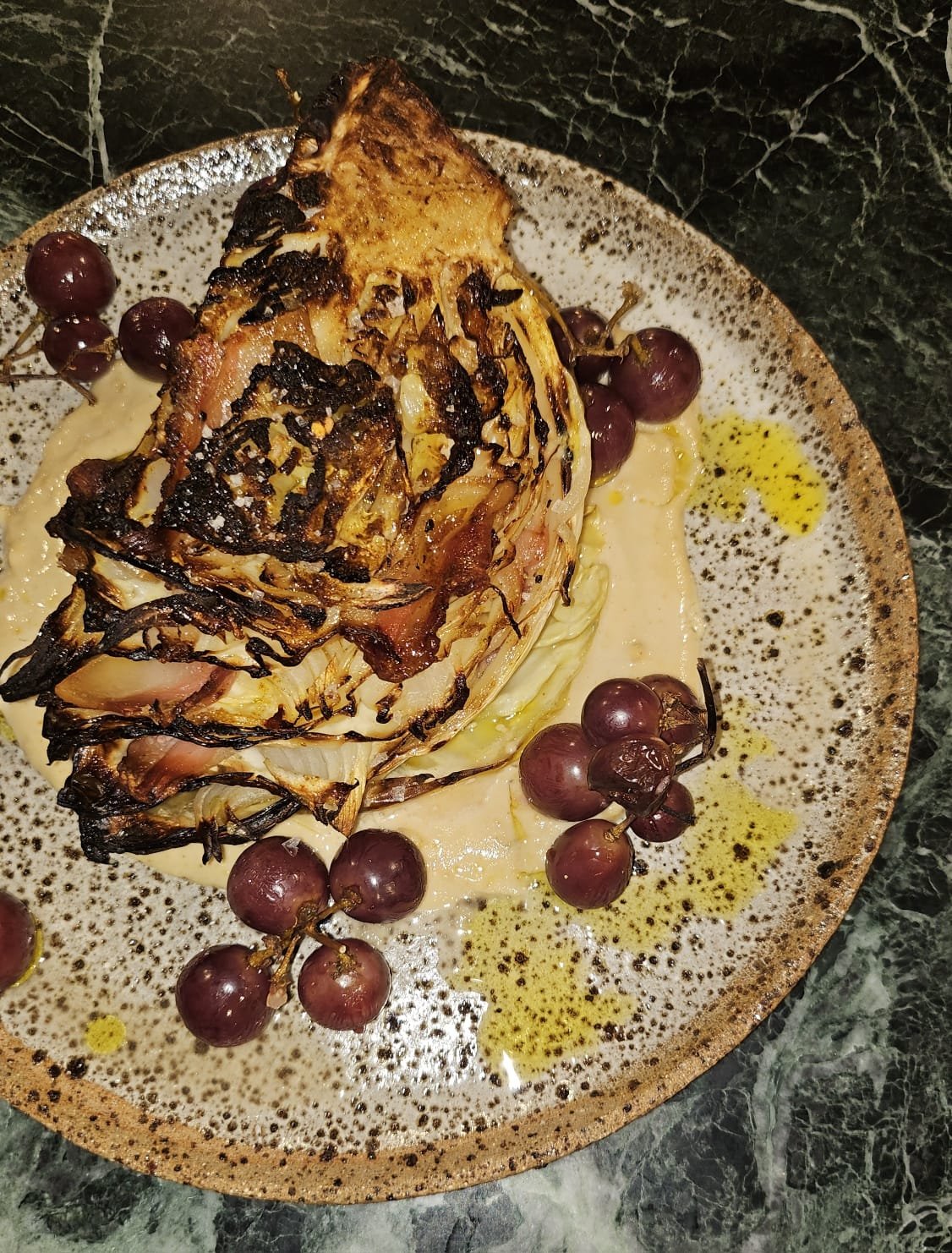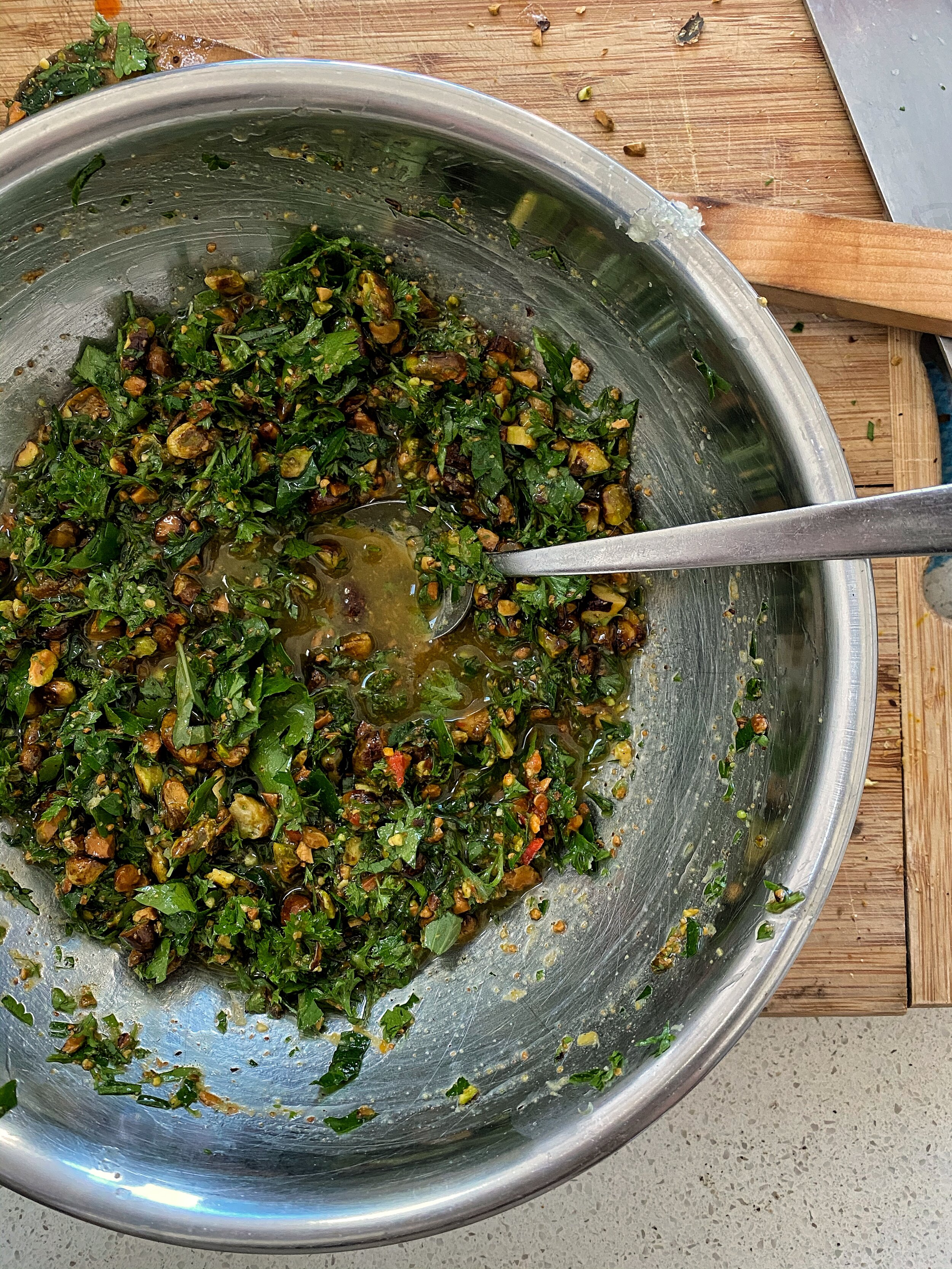My Italian mother-in-law would probably have a heart attack for calling something 'lasagne' that contains no pasta, but seeing as my husband made this particular recipe with me, we'll let it slide. We decided to replace the pasta sheets with layers of eggplant and zucchini on account of coming home from the Australian Financial Review Top 100 Restaurant Awards in Sydney after an epic 4 days of eating everything in sight (we went to Sokyo, Billy Kwong, Icebergs, The Dolphin, Hubert, Hubert again, Fratelli Paradiso, Automata, Ester and Din Tai Fung, just so you get the picture) and wanted to eat healthier without feeling like we were missing out on life. Everything else about this dish is legit though, including the very handy Italian mama kitchen tip of using leftover charcuterie bits and pieces to add depth of flavour to sauces and stews (we used njduia). Add to that the not-very-Italian-mama tip of adding a little XO into sauces that aren't necessarily of Asian influence, and you have one rich, complex sauce that works well on pretty much anything.
Ingredients
Red sauce
1 leek, washed and finely sliced
3 brown onions, peeled and finely sliced
2-3 cloves garlic, peeled and finely sliced
50g njduia (or any leftover pieces of salami, pancetta or bacon fat, finely chopped)
1/2 bottle of red wine
2 tins crushed tomatoes
1 strong tablespoon of XO paste
Salt & pepper.
The rest
1 large eggplant, mandolined lengthways into 5mm sheets
2 large zucchinis, mandolined lengthways into 5mm sheets
200g fresh ricotta
1 handful parsley leaves, finely chopped
1 fennel bulb, sliced
Sea salt flakes
Freshly cracked black pepper
Olive oil
Method
Preheat an oven to 180c. For the red sauce, heat a large saucepan on a low to medium heat, then add a good slug of olive oil. Add the leeks, onion and garlic and cook until softened but the vegetables haven't taken on any colour. Take this opportunity to season the base. Add in the njduia (or chosen salumi) to the pan, burying it amongst the vegetables. It'll begin to break down and render the fat out. Once this happens, mix everything vigorously to combine. After another 2-3 minutes, add the wine. Cook over medium high heat until reduced by two thirds and the mixture is glossy and thick. Add the tinned tomatoes and stir to combine. Once boiling, reduce the heat and simmer the sauce until reduced by about half and starts to take on a thick spoon-coating texture. Season with salt, pepper and XO to taste (this gives the sauce an umami punch and an extra dimension of flavour), then remove from heat and carefully transfer to a heatproof blender. Alternatively, you can use an immersion blender on it's highest setting. Blitz the mixture on high into a smooth puree, then set aside to cool slightly.
Meanwhile, prepare the ricotta filling by combining the ricotta with the chopped parsley in a bowl, mixing well. If the mixture is too thick, add a little olive oil to the mix. Season well with salt and pepper, then set aside.
Line a baking dish with baking paper. Spread a few spoonfuls of the red sauce into the dish, then top with a layer of eggplant. Top with an even layer of ricotta, then more red sauce, then a layer of zucchini. Continue to alternate layers of eggplant, red sauce, ricotta, and zucchini, finishing with ricotta on top. Lay the fennel slices on top and cover with a layer of baking paper. Transfer the dish to the oven and bake for 30 minutes. Remove the baking paper, turn the oven up to 200c and continue to cook for a further 20-30 minutes or until the top is golden and bubbly.
Remove the lasagne from the oven and allow to cool and set before slicing, otherwise the whole thing will collapse. Serve the lasagne topped with Parmesan or pecorino, microplaned over the top, and a few basil leaves.




















